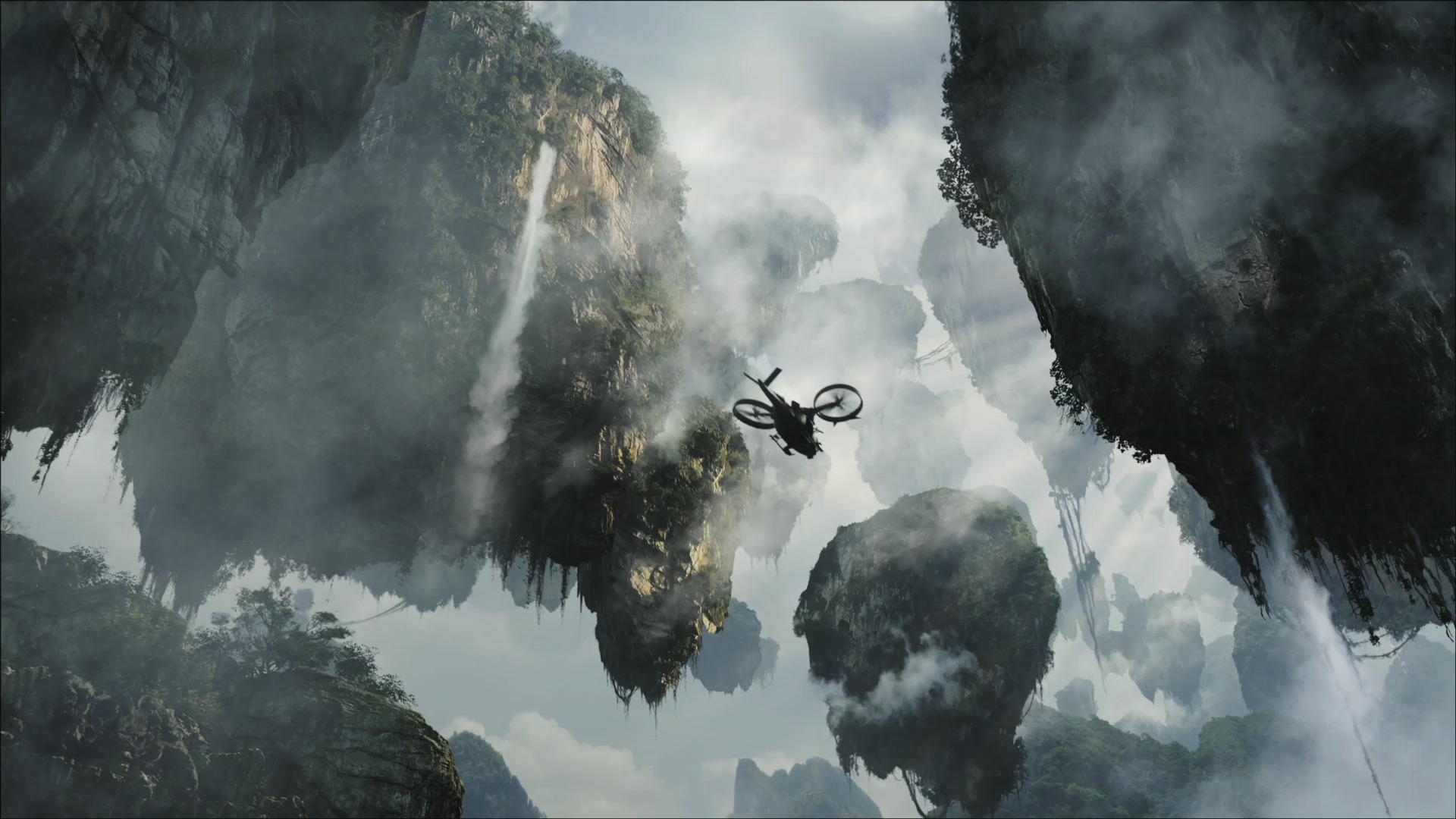WHAT SHAPED PANDORA
As I have mentioned in all of my previous posts, the planet of Pandora is home to many unique features and landforms. The planet is composed of mostly tropical, coastal, and karst landscapes. However, Avatar focuses mainly on the Tropical and Karst landscapes, coastal is saved for the next movie. The planet has much more water than Earth has, which is a key reason the planet looks the way it does. Fluvial processes have had a major impact on shaping Pandora. The high amount of rain water in the higher altitudes feeds all of the waterfalls, rivers, and streams which all carve their own paths onto the surface. |
| Here we can see how water flow has previously shaped Pandora |
Pandora is also home to many karst landscapes as well. These tropical karst landscapes are very unique because of the high amount of water and organic material. Dissolution has created many karst towers, such as we would find in China ( According to James Cameron this is where the majority of the inspiration came from)
| Here is a prime example of a karst tower in the background |
 |
| For the sake of the blog, I will consider the Floating Mountains to behave in a similar manner to karst landforms, besides the fact that they are...well, floating. |
TEN YEARS FROM NOW
In ten years from now Pandora will look fairly similar as it does now. There will however be changes that may not be so obvious. The waterfall and stream (picture 1) will experience the most obvious changes. The flow of water across the rock face of the waterfall will begin to erode the rock, causing the falls to recede slightly. The meandering stream will most likely have changed its path by wiggling across the floodplain, which is typical for all meandering streams. The old route of the stream will dry out and become a rich environment for new flaura to develop. The karst landscapes will fall victim to even more dissolution in the next ten years. However, this change will not be drastic in such a small time frame.
ONE HUNDRED YEARS FROM NOW
Over the course of 100 years, the falls will have receded even more, creating a larger basin at the bottom, which will also begin to undercut the rock face. The meandering stream will have changed course so drastically that it created goose neck bends, that have been cut off to create ox bow lakes. Pandora's water table is extremely high, so the ox bow lakes will remain for quite some time. The karst towers will become noticeably steeper and more isolated due to dissolution. There may even be more towers beginning to form. The floating mountains will shrink in size due to the same process. Since these mountains float in a magnetic field, they will rise in elevation due to the decreased mass.
ONE THOUSAND YEARS FROM NOW
In 1000 years from now the small meandering stream we have seen may turn into a much larger river. The water flow in the falls will continue to erode the rock face, which will allow for a larger volume of water to travel these routes. This will expand the natural levies and widen the floodplain.
The "stone forests" will continue to grow and more towers will form. The chemical reaction between the water and stone will eat away at the floating mountains as well. Perhaps this will create caverns and cave systems inside (how cool would that be!)
RECAP
The planet of Pandora has some fascinating land forms, and even though the location is fictional, a lot of inspiration came from actual locations on Earth. While Pandora is an extraterrestrial planet, and may not adhere to the same rules as earth, it is still feasible to explain the phenomena in the same ways as they happen on Earth.
Here are a few inspirational shots for the movie from China's Zhangjiajie Mountains
 |

If the water keeps eroding Pandora, it may very well end up look like Halong Bay in Thailand
 |
| photo credits: http://nature.new7wonders.com/archives/wonder/halong-bay |
AVATAR photo credits to
Source of inspiration
Zhangjiajie Mountain photo credits to













